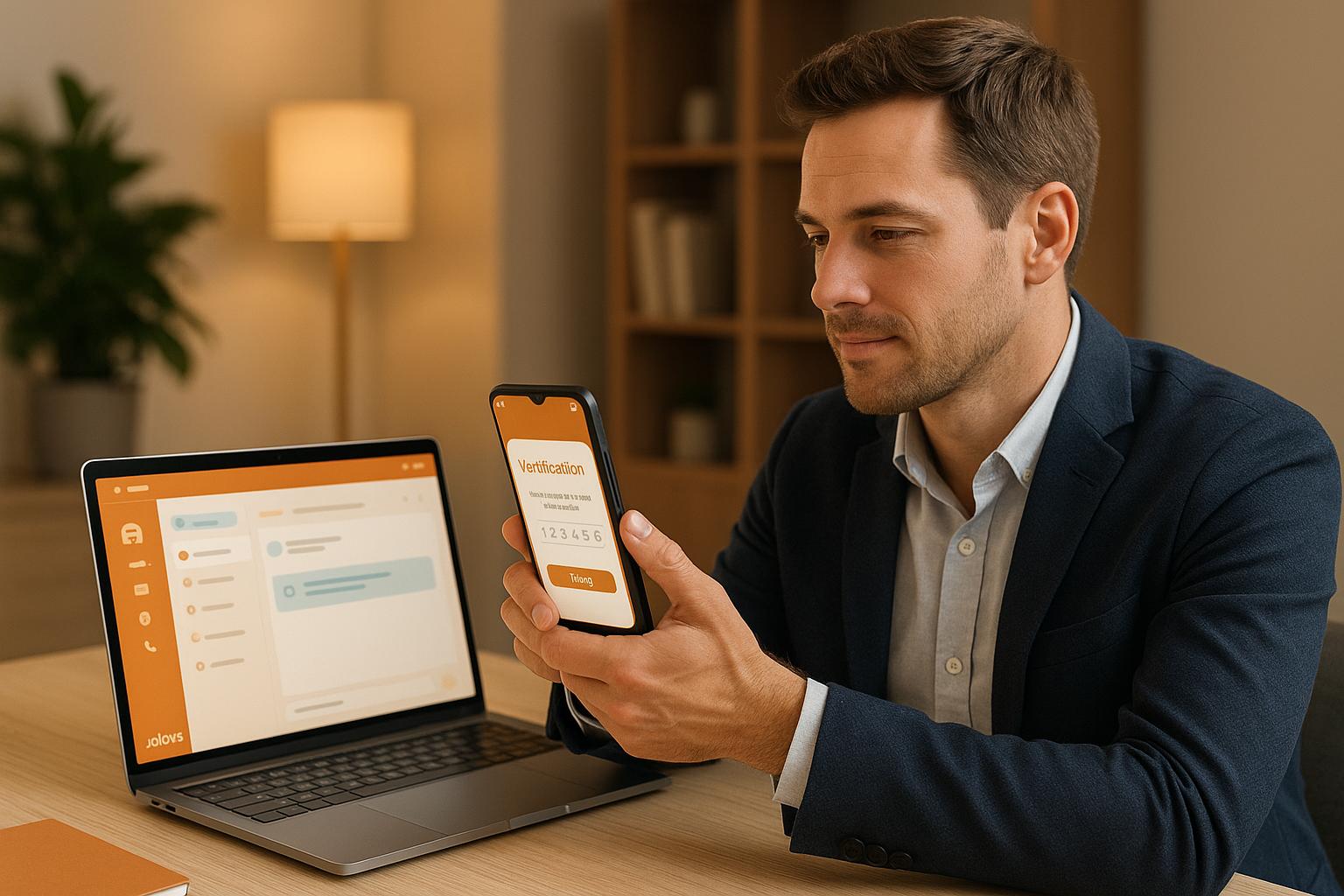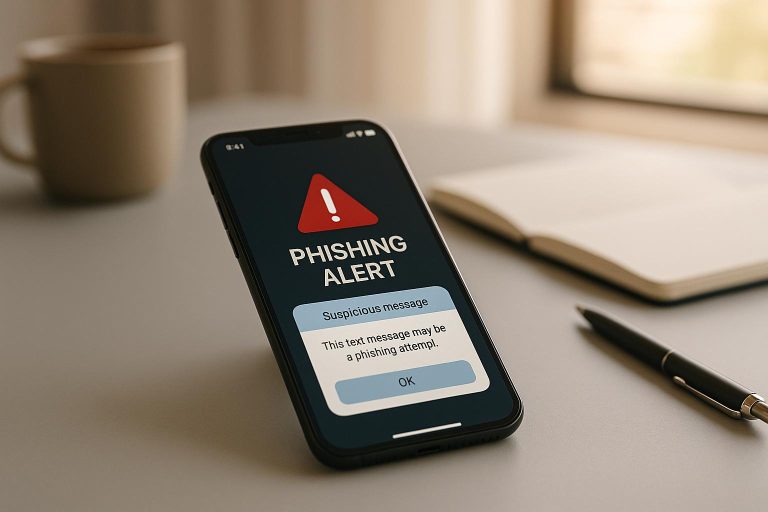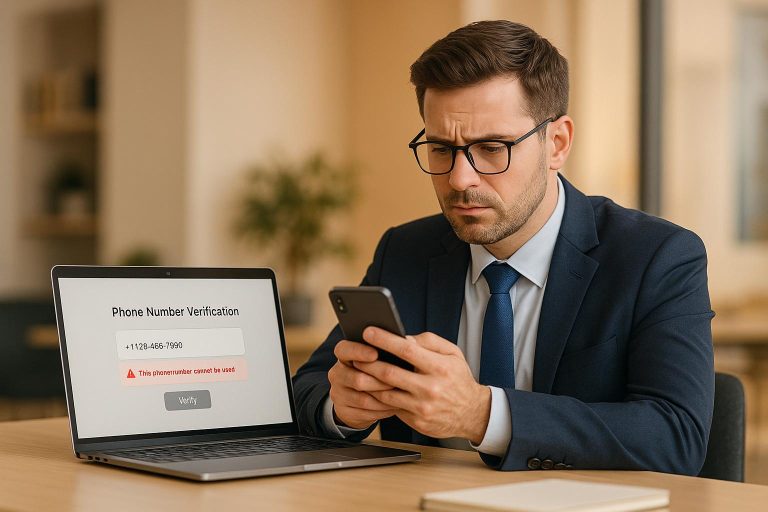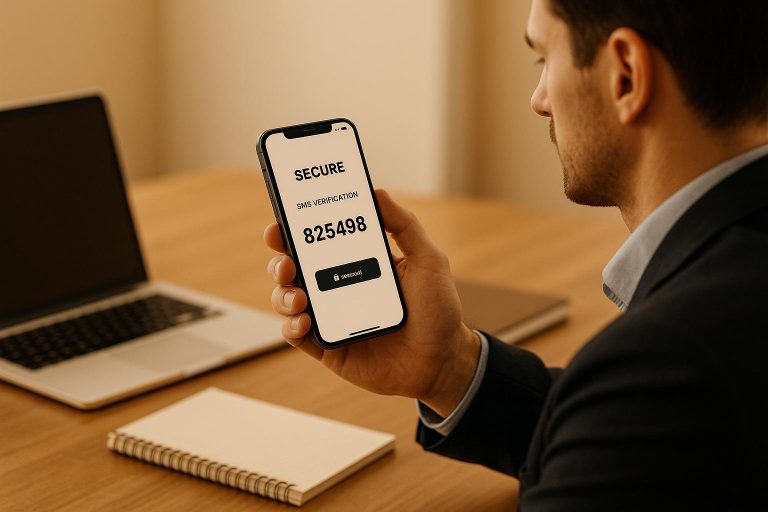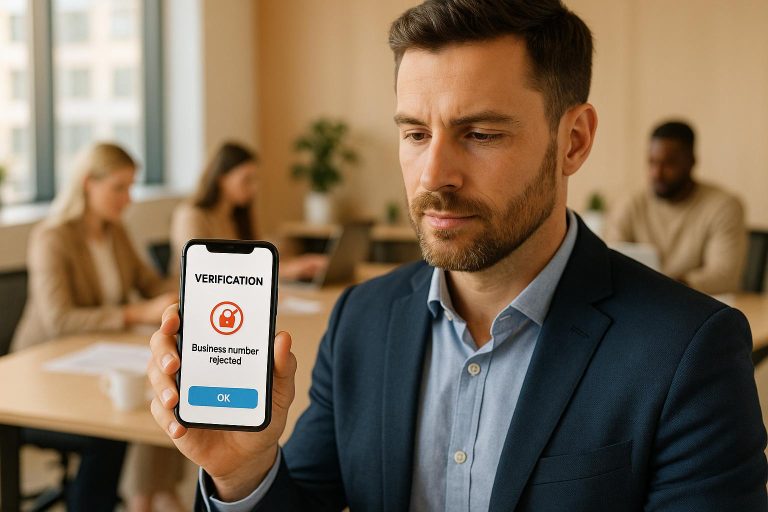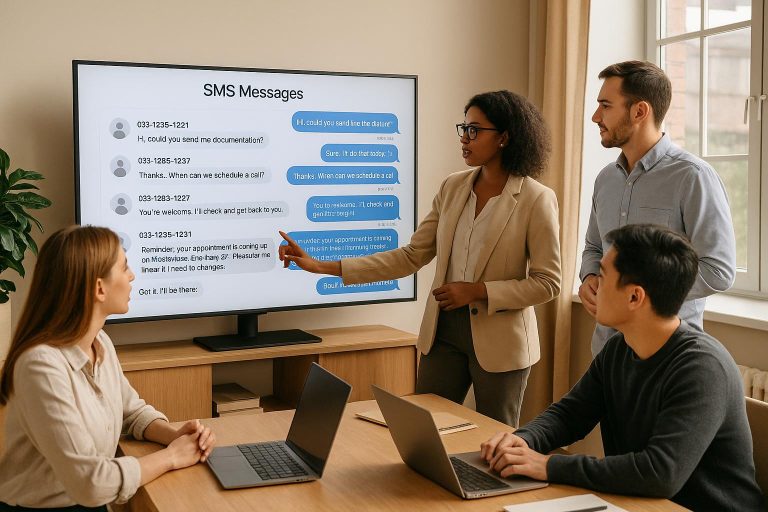LinkedIn Sales Navigator Won’t Accept Your Business Number? Solution Inside
Frustrated with LinkedIn rejecting your business phone number for verification? Here’s the issue: LinkedIn blocks VoIP numbers (like Google Voice or RingCentral) for SMS verification due to security measures. Instead, it requires a real-SIM number tied to a physical SIM card and a cellular network.
The fix? Use a real-SIM service like JoltSMS, which provides numbers that LinkedIn accepts for verification. With a 99.9% SMS delivery success rate and integration options like Slack and Discord, JoltSMS ensures seamless access to LinkedIn Sales Navigator.
Steps to resolve:
- Sign up for a JoltSMS number ($50/month).
- Enter the number during LinkedIn’s verification process.
- Receive your code instantly via Slack, Discord, or their dashboard.
No more delays or rejections – switch to a real-SIM solution and keep your LinkedIn access uninterrupted.
Why VoIP Numbers Get Blocked for SMS Verification
Platforms like LinkedIn have ramped up their verification processes to tackle fraud and prevent fake account creation. This has created challenges for business phone systems using Voice over Internet Protocol (VoIP) services. While VoIP is popular for its affordability and features, it often struggles with SMS verification. Why? VoIP numbers are easy to obtain with minimal identity checks, making them a target for misuse. Plus, VoIP systems are designed to prioritize voice communication, which can lead to delays or outright failures in delivering verification texts. To understand the root of the issue, it helps to compare VoIP numbers with real-SIM numbers.
VoIP vs. Real-SIM Numbers: The Key Differences
The technical differences between VoIP and real-SIM numbers explain why SMS verification often fails with VoIP.
VoIP numbers work through the internet. Providers like RingCentral, Google Voice, and Grasshopper handle communication digitally, bypassing traditional cellular networks. This makes them flexible and ideal for business calls, but it also means they lack direct cellular network registration – a key factor many verification systems rely on.
On the other hand, real-SIM numbers are tied to physical SIM cards that connect directly to cellular networks. Each SIM card has a unique identifier that links it to a mobile carrier, offering a level of authenticity that platforms like LinkedIn trust. When a real-SIM number is queried, the carrier confirms its legitimacy, ensuring the number is active and reliable.
This direct carrier connection gives real-SIM numbers a distinct advantage in SMS delivery, avoiding the delays and inconsistencies often seen with VoIP numbers.
VoIP vs. Real-SIM Comparison for Verification
| Feature | VoIP Numbers | Real-SIM Numbers |
|---|---|---|
| Platform Acceptance | Frequently blocked by verification systems | Accepted by over 1,000 platforms, including LinkedIn |
| SMS Delivery Rate | Unpredictable and inconsistent | High reliability with a 99.9% delivery rate |
| Verification Speed | Prone to delays or failures | Near-instant delivery, supported by webhook integrations |
| Carrier Authentication | No direct link to carrier networks | Verified directly through cellular network providers |
| Business Use | Best for voice calls and meetings | Tailored for dependable SMS verification |
| Setup Complexity | Easily integrates into existing systems | Requires a dedicated setup for verification |
| Team Access | Standard with business phone systems | Offers advanced integrations (e.g., webhooks to Slack/Discord) for team collaboration |
This breakdown highlights why real-SIM solutions are essential for platforms like LinkedIn Sales Navigator. Many businesses rely on VoIP for calls and meetings, but these systems simply aren’t built for SMS verification. A smart workaround? Keep using VoIP for voice communication while dedicating a real-SIM number for verification tasks. This hybrid setup ensures seamless platform access without disrupting your existing workflows.
Common Solutions That Don’t Work
When LinkedIn Sales Navigator rejects your business number, many users instinctively try fixes that ultimately fail. This is because LinkedIn has a strict policy against VoIP numbers, rendering these solutions ineffective.
Standard Troubleshooting Steps
Typical attempts, like switching VoIP providers, clearing browser caches, or trying different devices, won’t bypass LinkedIn’s restrictions. Some businesses assume that upgrading from services like Google Voice to RingCentral or Grasshopper to 8×8 might solve the problem. However, LinkedIn doesn’t differentiate between free and paid VoIP services – all VoIP numbers are blocked.
"Cell and landline phones are supported. VoIP numbers aren’t." – LinkedIn Help [3]
Another common workaround is using personal cell phone numbers. While this might work temporarily, it introduces challenges like managing team access and keeping personal and professional communications separate.
Why Enterprise Verification APIs Won’t Help
Enterprise verification APIs are another misunderstood solution. Services like Twilio Verify, Vonage Verify, or Plivo Verify are often mistaken as tools that can help with LinkedIn verification. These APIs are designed for a different purpose: they enable developers to add SMS verification to their own platforms. They do not provide phone numbers that can receive verification codes from external platforms like LinkedIn.
This confusion often arises from searching for "SMS verification solutions" and misinterpreting the role of these tools. These APIs are intended to confirm the authenticity of customers’ phone numbers, not to assist individuals trying to verify accounts on platforms like LinkedIn.
LinkedIn’s verification process is built on its own infrastructure and explicitly prohibits VoIP numbers. The restrictions are even stricter when identity verification involves CLEAR. According to LinkedIn, "Mobile Virtual Network Operator (MVNO) phone numbers, Voice Over IP (VOIP) phone numbers, and numbers for prepaid phones cannot be used" [2][1]. This makes VoIP numbers completely incompatible with LinkedIn’s verification requirements, extending beyond basic SMS verification to broader identity validation policies.
How JoltSMS Solves the Problem: Real-SIM Numbers for Verification
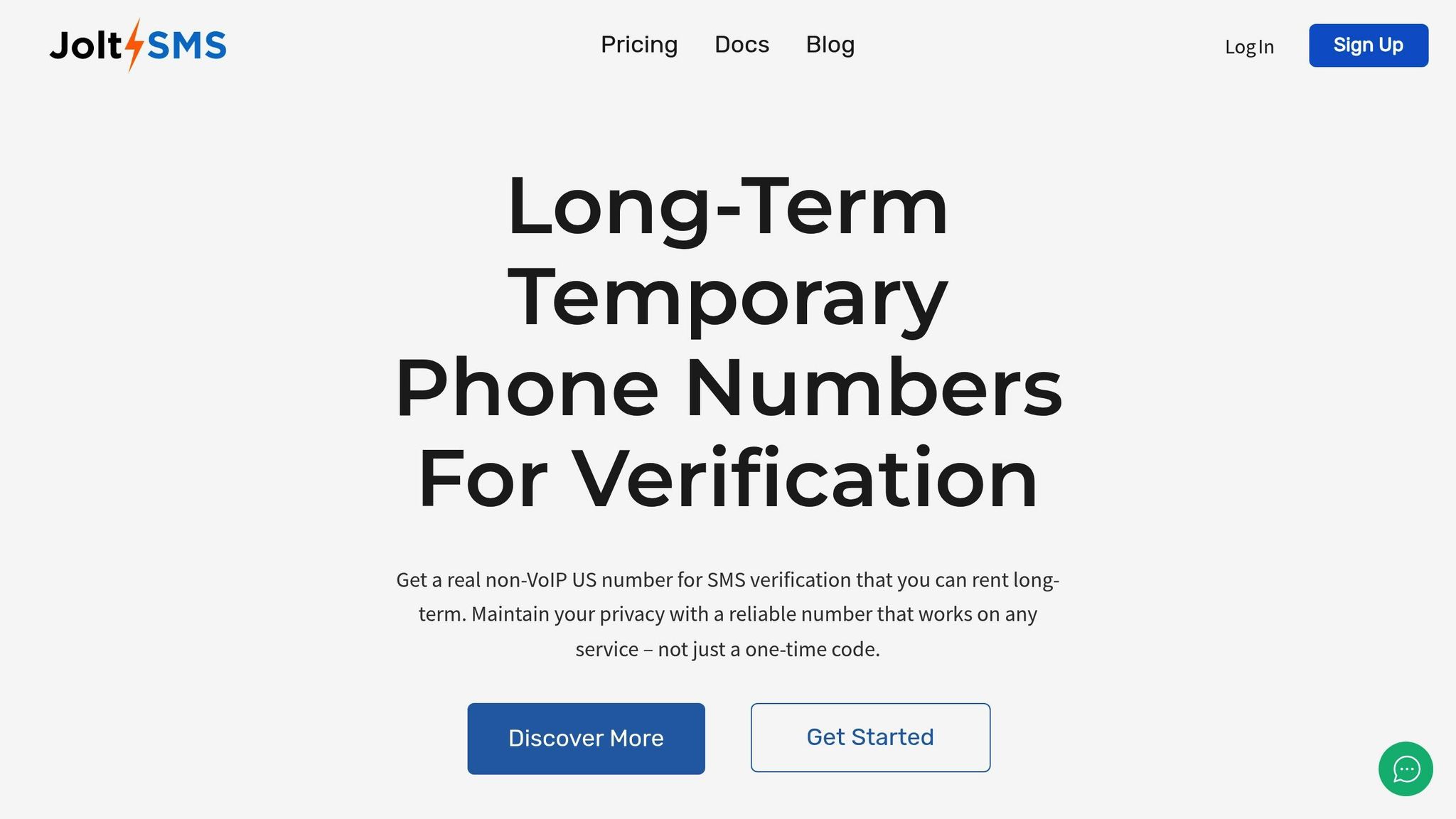
Now that we’ve covered why VoIP numbers often fall short, let’s dive into how JoltSMS provides a reliable solution. JoltSMS addresses LinkedIn’s verification issues by using real-SIM numbers. Unlike VoIP-based services, JoltSMS relies on physical SIM cards from traditional mobile carriers. This approach eliminates the problems associated with internet-based providers, which LinkedIn actively blocks.
What Sets JoltSMS Apart
The standout feature of JoltSMS is its real-SIM technology. While services like Google Voice or RingCentral transmit messages over the internet, JoltSMS uses actual SIM cards from well-known carriers. This ensures that their numbers are widely accepted – working on over 1,000 platforms with an impressive 99.9% SMS delivery rate [4]. Plus, every number is exclusively assigned for the duration of your subscription, so you’ll never deal with someone else’s verification codes landing in your inbox.
How to Set Up JoltSMS for LinkedIn Verification
Getting started with JoltSMS is simple and efficient:
- Step 1: Head to the JoltSMS platform and choose a dedicated U.S. number for $50 per month. This includes unlimited inbound SMS under fair-use policies.
- Step 2: Use JoltSMS’s webhook features to integrate the number into your workflow. You can receive SMS codes instantly via Slack, Discord, or the REST API.
- Step 3: Enter your JoltSMS number during LinkedIn’s verification process, and the SMS code will arrive in real-time through your selected channel.
- Step 4: Monitor incoming messages and manage multiple verifications easily through the real-time dashboard.
This streamlined process ensures hassle-free LinkedIn verification while adding long-term value to your business operations.
Why Businesses Choose JoltSMS
JoltSMS eliminates the usual headaches of LinkedIn Sales Navigator verification. By leveraging real-SIM technology, it bridges the gap between technical requirements and practical business needs. With over 402,000 SMS codes successfully delivered and 10,000+ long-term numbers issued, JoltSMS has built a reputation for reliability [4]. The automatic monthly renewal feature also ensures uninterrupted service, unlike temporary or disposable numbers that often lead to disruptions.
For teams, JoltSMS makes collaboration seamless. Sales managers can assign dedicated numbers to specific team segments, while still maintaining centralized control over verification codes. Here’s what users have to say:
"As someone who has multiple VA’s, sharing multiple online accounts, this is a must-have tool. I have multiple long-term numbers, each sending SMS verification codes to a shared Slack channel. Very reliable!" – Michael Waters
"Tried a few other services first. But to put it simple, they didn’t work. This one did and I’ll continue to use it." – Erick Holmes
To top it off, JoltSMS offers 24/7 human support and a money-back guarantee if SMS verification fails. These features reinforce their commitment to keeping your LinkedIn Sales Navigator access uninterrupted and stress-free.
sbb-itb-070b8f8
Managing Verification Codes for Teams
JoltSMS doesn’t just simplify verification for individuals – it also offers tools that make managing codes across a team safer and more efficient. Sharing numbers among team members can create security vulnerabilities, but JoltSMS’s built-in collaboration features ensure secure and controlled access. These tools build on JoltSMS’s reliable approach to verification, providing an added layer of team-focused security.
Team Access and Collaboration Features
Managing SMS codes for a team has never been easier. With JoltSMS, webhook integration sends codes directly to specific Slack or Discord channels, eliminating the need for personal number sharing. This keeps the process secure and streamlined.
A centralized, real-time dashboard gives teams full visibility of incoming codes, while REST API integration allows codes to flow seamlessly into your existing systems. Each JoltSMS number is dedicated to your team, reducing the chances of misdirected codes and reinforcing security.
Best Practices for SMS Code Management
To make the most of JoltSMS’s features, it’s important to follow a few best practices for managing verification codes. Start by limiting access to only those who need it. While JoltSMS makes sharing codes simple, restricting webhook access to key personnel – such as IT admins or sales managers – helps reduce potential security risks. Keeping verification codes in separate Slack channels or Discord servers, rather than mixing them with general team communication, adds another layer of organization and security.
Use the real-time dashboard to monitor usage patterns. This can help identify any unusual activity and address potential security concerns. Maintaining detailed records and audit trails not only aids compliance but also simplifies troubleshooting if issues arise.
For teams that depend on timely verification, it’s essential to establish clear internal protocols. Ensure that once a code is received, it’s acted on immediately. Regularly reviewing access permissions is also crucial as team roles change. When someone leaves the team or shifts to a different role, promptly update webhook configurations to remove their access. JoltSMS’s flexible settings make these updates quick and hassle-free without requiring a change to your dedicated phone number.
Finally, consider setting up backup communication channels. While JoltSMS boasts a 99.9% delivery rate, having a backup – like email alerts or SMS forwarding to an administrator’s phone – can ensure critical codes are never missed, even during unexpected system issues.
Conclusion: The Working Solution for LinkedIn Verification
If you’re tired of LinkedIn rejecting VoIP-based numbers, there’s a straightforward fix: a real-SIM solution. LinkedIn Sales Navigator’s system is designed to block VoIP numbers to reduce spam and protect account integrity. Unfortunately, this means most VoIP services won’t make it past the verification process.
Key Takeaways
JoltSMS solves this problem with real-SIM technology that works directly with traditional mobile carriers. This ensures LinkedIn recognizes your number as valid, bypassing the restrictions that trip up VoIP numbers.
But the benefits don’t stop there. Beyond verification, JoltSMS offers reliable support for LinkedIn and other business-related needs. Plus, with webhook integration for Slack and Discord, your team can receive verification codes directly in shared channels, making the entire process seamless.
Switch to a JoltSMS real-SIM solution and put LinkedIn verification issues behind you.
Next Steps for Getting Verified
Head over to joltsms.com to choose your dedicated number and set up webhook delivery for your team. With a 30-day minimum commitment, you’ll have stable access for your LinkedIn activities, and the money-back guarantee gives peace of mind if verification doesn’t work. Once your JoltSMS number is activated, go back to LinkedIn Sales Navigator, enter your new number, and get your verification code almost instantly via your configured channel. Say goodbye to interruptions and enjoy smooth access to LinkedIn Sales Navigator today.
FAQs
Why does LinkedIn reject VoIP numbers for SMS verification?
LinkedIn has taken a firm stance against using VoIP numbers for SMS verification. Why? To strengthen security and reduce the risk of fake accounts. VoIP numbers, which operate via the internet, are often considered less dependable for verifying someone’s identity compared to traditional, SIM-based mobile numbers. By enforcing this policy, LinkedIn aims to ensure that accounts and certain features are accessed only by genuine users.
Though VoIP services are excellent for managing business calls, they’re commonly restricted when it comes to SMS verification. Platforms like LinkedIn favor real mobile numbers, as they offer a higher level of trust and reliability.
Why does JoltSMS work better than VoIP numbers for LinkedIn verification?
JoltSMS leverages real-SIM numbers, which are widely accepted by platforms such as LinkedIn. Unlike VoIP numbers that are frequently blocked during verification, real-SIM numbers ensure verification codes are delivered without hiccups, sidestepping the common issues many encounter with VoIP services.
By using JoltSMS, you can navigate LinkedIn’s verification process seamlessly, equipping your business with a dependable solution to stay connected and maintain security.
Why is a real-SIM number better than a VoIP number for business verification?
Real-SIM numbers are physical mobile numbers issued by carriers, making them a trusted choice for verification processes. Unlike VoIP numbers, which are virtual and often restricted, real-SIM numbers offer greater reliability and are widely accepted by platforms. Many services specifically require a physical SIM connection to enhance security and reduce the risk of fraud – something VoIP numbers simply can’t provide.
While VoIP services are great for business calls and offer flexibility, they often fall short when it comes to SMS verification. This is because they lack the physical connection that many platforms rely on. Opting for a real-SIM number ensures your verification codes are delivered consistently and without hassle, saving you both time and unnecessary headaches.

